Swap spring cherry blossom for autumn leaves for the most Insta-worthy Japan holiday
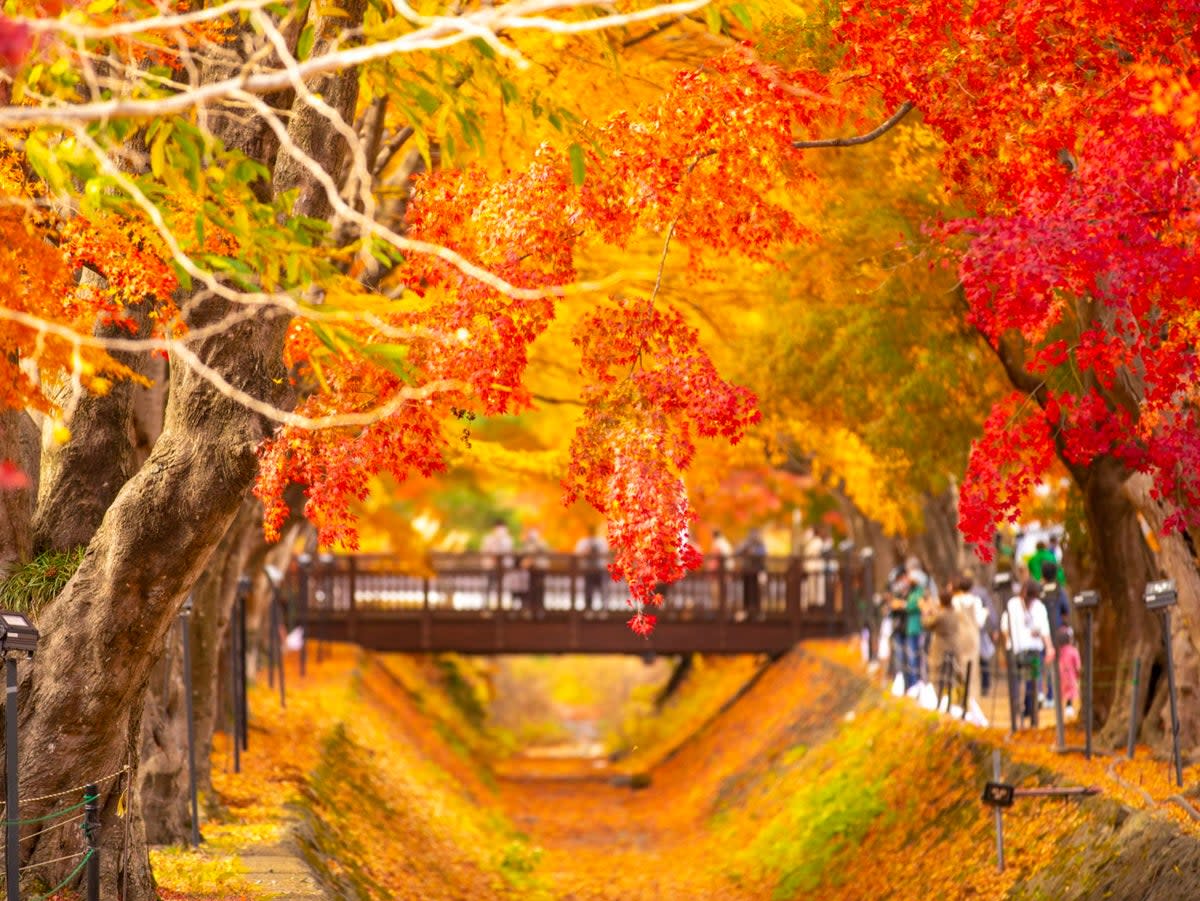
Cherry blossoms mean big business for Japan: each year, an estimated 63 million local and international tourists travel to and across the country to witness this candyfloss spectacle, spending $2.7bn in the process. But I’d argue that Japan’s natural beauty is best seen in autumn.
I’ve visited Japan on several occasions, the first two of which coincided with the peak of the country’s renowned cherry blossom season. Don’t get me wrong, the trees are incredibly beautiful – but seeing them can be hit or miss. They don’t bloom on the same dates each year, and bloom schedules differ across regions – meaning it can be tricky to know exactly when to visit. Plus, their petals only last for about a week, parks become crowded with picnickers and Instagrammers, and airlines inflate prices to capitalise on the influx of snap-happy tourists.
Having had our blossom fill, my husband suggested visiting in autumn, as he’d read that Japan’s fall foliage rivalled that of New England. I was sold – and soon discovered that the Japanese get (almost) as excited about autumnal hues as those of the spring. Numerous leaf-based events are held across the country, and the Japan Meteorological Corporation (JMC) releases an autumn leaves forecast. Although there is also a peak time for these, the colours start changing much earlier – meaning you have an almost two-month window in which to enjoy them.
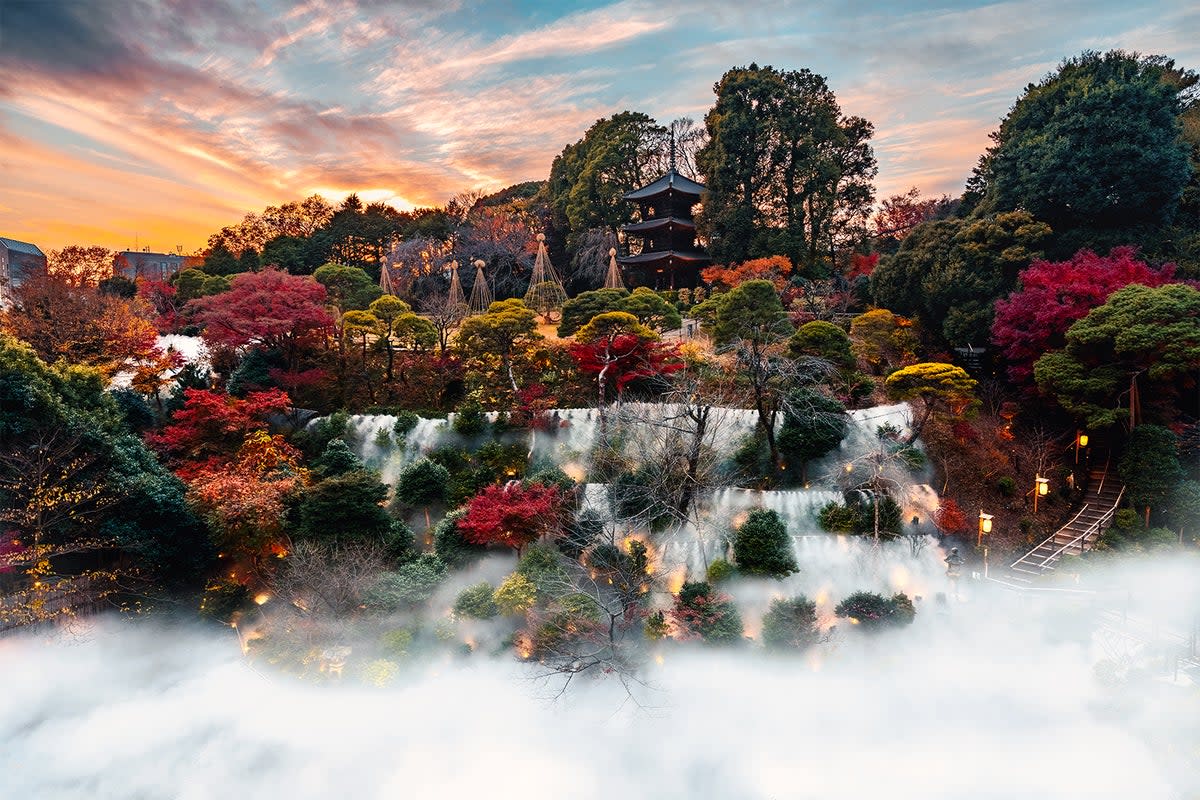
Japan has two types of trees that turn particularly impressive shades: momiji (maple) leaves become vibrant red, while ginkgo leaves transform into a sherbet yellow. Together, they create a superb, fiery spectacle.
Read more on Japan travel:
Our first stop was Kyoto, home to the must-see Kiyomizu-dera – an impressive temple complex perched on the mountainside. The imposing main hall is unlike anything you’ll find elsewhere: constructed from wood beams cleverly slotted together and without the use of nails, it sits atop 139 stilts. I’d thought the view from its large verandah in spring was striking enough, but in autumn it’s elevated to another level. Before your gaze reaches the city in the distance, you’ll be hypnotised by the thousands of surrounding trees that erupt into orange and red at this time of year.
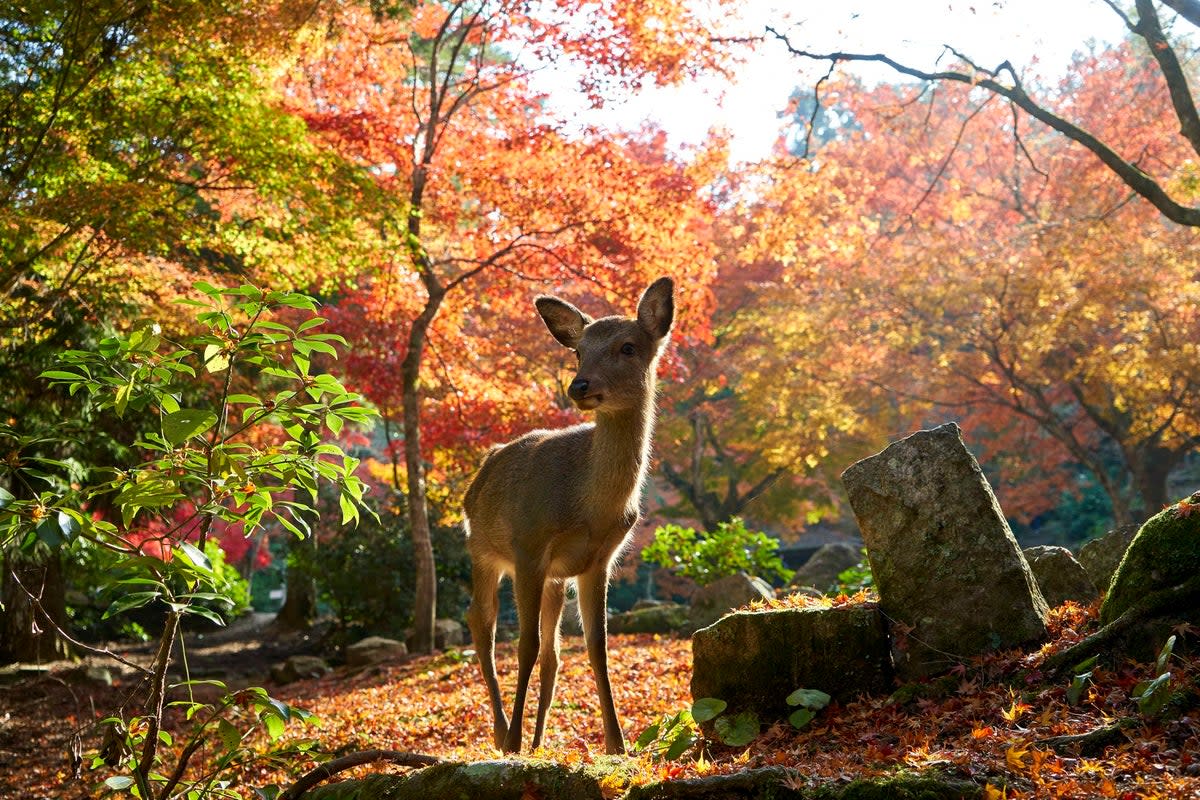
Another day took us to the Philosopher’s Path, a pretty, 2km stone trail alongside a canal that draws blossom fans but holds equal foliage appeal. There, I quickly discovered that Japan’s autumn weather – generally dry and sunny with temperatures averaging 18-20C – is ideal for long walks that allow you to enjoy the rich surrounding colours at your own pace.
Crowds flock to the Tofoku-ji Temple, but I was particularly taken with the Daikakuji Temple – a lesser-known but equally serene site. After some barefoot indulgence walking on the sumptuous tatami mat flooring inside the temple, I stepped outside to stroll around the large, tranquil pond. With bright blue skies overhead, my hour spent meandering between vermilion trees, small torii gates and inscribed stone tablets almost seemed too picture perfect to be real.
Witnessing the array of colours as Fuji appeared in the background was spellbinding
Further leaf highlights came courtesy of Hakone, an onsen (hot spring) town near Mount Fuji. Tucked in the mountains, this bather’s utopia is surrounded by nature. To get a bird’s eye view of the trees in all their glory, we jumped on the cable car that runs from the town to Lake Ashi. Ignoring my slight fear of heights, witnessing the array of colours as Fuji appeared in the background was spellbinding. After a walk along the lake’s shores, flanked by warm-coloured mountains, we returned to our ryokan (traditional Japanese inn) to soak tired feet in the bath waters of our balcony hot tub while drinking in the vista.
Our final stop took us to Tokyo, where – rather surprisingly – there were still plenty of places to enjoy foliage. Matcha latte in hand, I headed to Meiji Jingu Gaien – a large, peaceful park that you’d never guess is next to Shinkuju’s hectic streets. With more than 500 blossom trees, it’s a remarkable sight in spring – but I was thrilled to now find pathways lined with yellow ginkgo trees, whose branches met to create a dazzling leafy cocoon. The following day, after a busy morning perusing the upmarket stores of Ginza, I headed to another pocket of serenity: Rikugien Gardens. Here, I encountered a mix of ginkgo and momiji scattered around traditional stone bridges and lanterns (and they also hold an evening illumination in autumn – tickets ¥1,100, about £6).
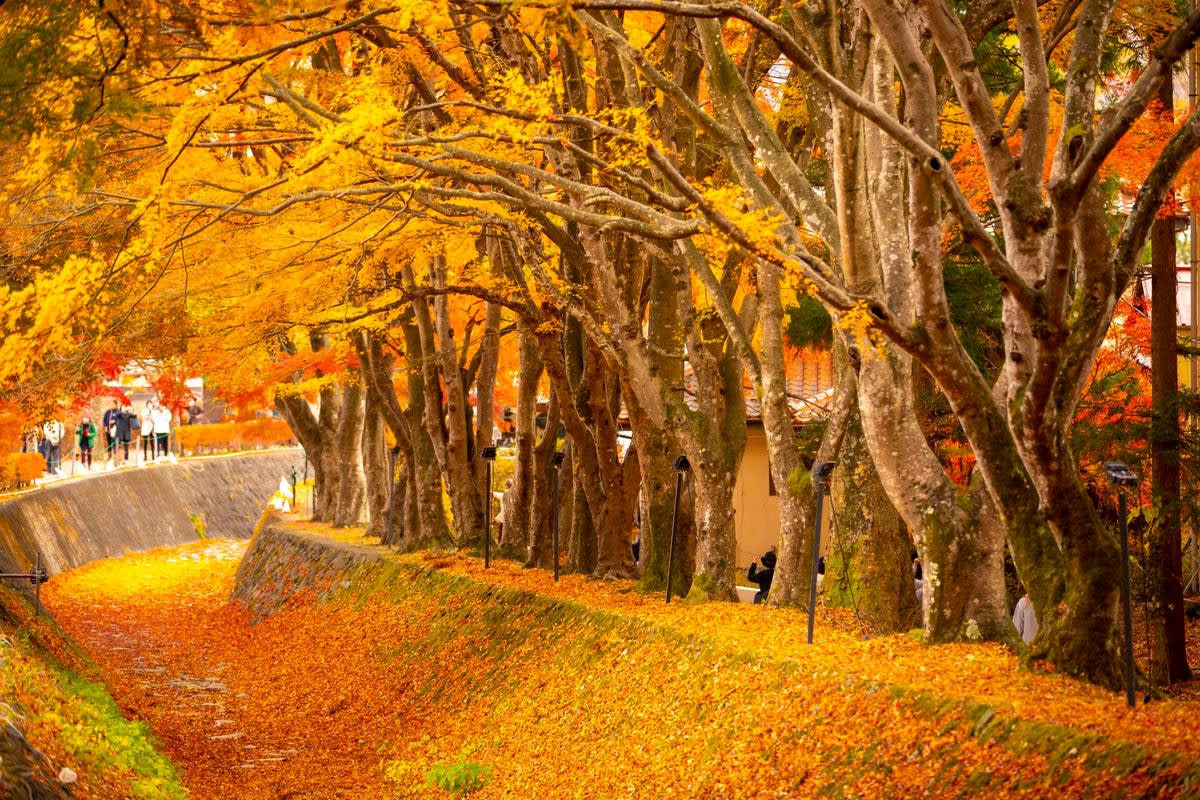
For those willing to venture out of Tokyo, I highly recommend the mountain town of Nikko. You’ll find the famous “see no evil, hear no evil, speak no evil” monkeys at the impressive Toshogu shrine site – resting place of Japan’s most renowned samurai leader. After exploring its numerous buildings, we headed to the photogenic Shinkyo bridge and Ryuzu falls – which, embellished with orange and red momiji leaves, truly made me catch my breath.
Stopping in at Fukuoka, Kumamoto, Osaka, Beppu, and Ise, everywhere we went, vivid leaves awaited in abundance – and the sight never got old. Japan’s cherry blossoms may be the scene stealers, but its autumn leaves will forever hold a special place in my heart.
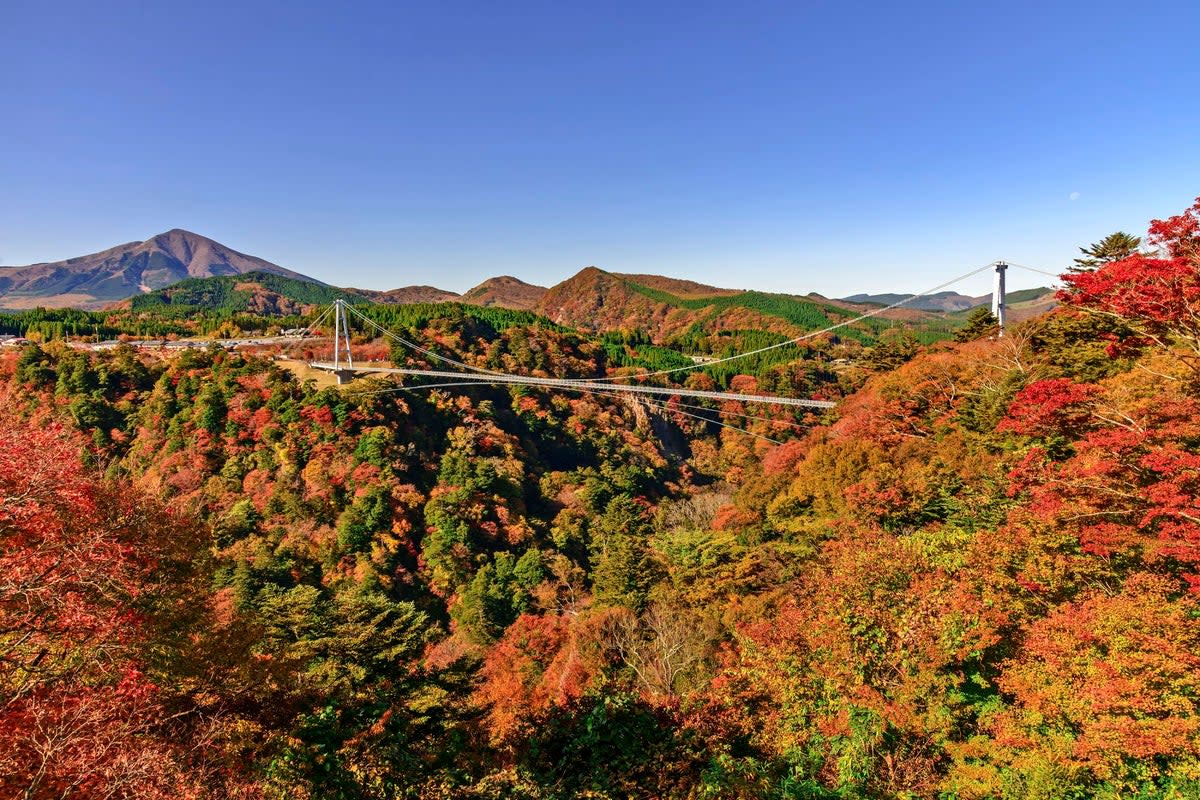
Other viewing spots and autumn leaves events
Obara Shikizakura festival
For a unique experience, visit Obara near Toyota. It’s home to rare shikizakura cherry trees, which bloom in spring and autumn – meaning visitors in the latter part of the year enjoy both blossoms and foliage.
Kiyomizu-dera night-time light-up
The sight of this iconic structure and the surrounding nature bathed in warm hues is one to behold. (Tickets ¥400, about £2.15)
Fuji Kawaguchiko autumn leaves festival
This month-long festival at Lake Kawaguchi offers tree illuminations, taiko drumming performances and food stalls. For an unforgettable shot of Mount Fuji, head to the Chureito Pagoda inside Arakurayama Sengen Park.
NAKED Autumn Leaves Shinjuku Gyoen
Come autumn, creative lab NAKED presents illuminations and projections for the trees in Tokyo’s Shinjuku Gyoen park and gardens. Tickets from ¥2,000 (about £11).
Hoshida Park
This expansive mountain park just outside Osaka is a hiker’s paradise. Enjoy the incredible foliage views from the famous Star Swing wooden suspension bridge.
Kobe Municipal Arboretum
A vast 132 hectares in size, the botanical park is home to 3,000 trees – including momiji and dawn redwoods – which look especially magnificent in autumn.
Travel essentials
Getting there
Japan Airlines offers direct flights from London Heathrow to Tokyo Haneda, with a flight time of around 13.5 hours.
Staying there
Home to over 200 momiji trees and a historic pagoda, the Japanese-style garden of Hotel Chinzanso Tokyo is a stunning spectacle in autumn.
Granbell Hotel Kyoto offers Japanese-style rooms in the traditional Gion district, a short walk from Kiyomizu-dera.
Read more of our best Tokyo hotel reviews